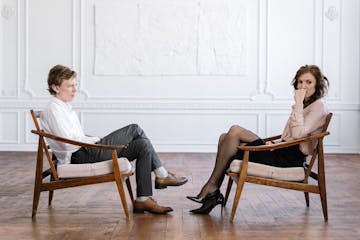Homophobia is a term that refers to aversion, fear, prejudice or discrimination towards homosexual, bisexual or transgender people. Throughout history, homophobia has taken different forms and manifestations, which has led to the identification of various types of homophobia. Recognizing these different types is essential to be able to address and combat this problem effectively.
Individual Homophobia
Individual homophobia manifests itself through through hostile attitudes, beliefs and behaviors towards LGBT people. This type of homophobia can manifest itself in different ways, such as offensive comments, ridicule, rejection, physical or verbal attacks, among others. In many cases, individual homophobia is based on stereotypes, prejudices, and a lack of understanding or empathy toward LGBT people.
A common form of individual homophobia is internalized phobia, in which LGBT individuals may experience feelings of shame, guilt or self-hatred due to the internalization of social homophobia. These feelings can negatively impact the self-esteem and mental health of LGBT people, perpetuating a cycle of self-inflicted discrimination.
How to recognize individual homophobia:
Some signs of individual homophobia can include the avoidance of LGBT people, the use of homophobic or discriminatory language, the denial of rights and freedoms for LGBT people, as well as negative attitudes or perceptions towards sexual and gender diversity. It is important to be attentive to these indicators and confront any manifestation of individual homophobia when necessary.
Institutional Homophobia
Institutional homophobia refers to practices, policies or norms that perpetuate discrimination or exclusion of LGBT people in social institutions, such as government, education, health or work. While institutional homophobia may be less visible than individual homophobia, its effects can be equally harmful and limit LGBT people's access to basic rights and opportunities.
Some examples of institutional homophobia include discriminatory laws, exclusion policies in the workplace, lack of adequate health services for LGBT people, or the absence of legal protection against discrimination based on sexual orientation or gender identity. These practices contribute to the marginalization and vulnerability of LGBT people in society.
How to recognize institutional homophobia:
Institutional homophobia can manifest itself through the lack of legal recognition of same-sex couples, the denial of parental rights to LGBT people, the absence of inclusive education in schools, or discrimination in access to basic services. It is important to question and denounce any institutional practice or policy that perpetuates homophobia and discrimination towards LGBT people.
Internalized Homophobia
Internalized homophobia refers to adoption by LGBT people of negative or self-destructive attitudes towards their own sexual or gender identity. This phenomenon can manifest itself in the form of feelings of guilt, shame, low self-esteem or rejection of one's own sexual orientation or gender identity. Internalized homophobia can be the result of continued exposure to social or individual homophobia.
People who experience internalized homophobia may face difficulties accepting and openly expressing their LGBT identity, which in turn can affect their emotional well-being, interpersonal relationships and quality of life. It is important to provide support and resources to LGBT people who may be dealing with internalized homophobia.
How to recognize internalized homophobia:
Some signs of internalized homophobia may include denial of the own sexual orientation or gender identity, the perception of homosexuality as a defect or illness, self-censorship in the expression of LGBT identity, or the adoption of self-destructive behaviors. Individual or group therapy can be an effective tool for addressing and overcoming internalized homophobia.
Structural Homophobia
Structural homophobia refers to systems of power and control that perpetuate discrimination. and inequality towards LGBT people at the societal level. This type of homophobia operates through social, economic, political and cultural structures that reinforce the marginalization and invisibility of LGBT people in different areas of society.
Structural homophobia manifests itself in the lack of representation and recognition of sexual and gender diversity in the media, political and religious institutions, as well as in the limitation of opportunities and rights for LGBT people in areas such as employment, housing, education or health care. These mechanisms reinforce exclusion and discrimination towards the LGBT population.
How to recognize structural homophobia:
Structural homophobia can be observed in the absence of anti-discrimination legislation, in the criminalization of homosexuality , in the lack of access to basic services for LGBT people, in the denial of civil and marriage rights, or in the perpetuation of harmful stereotypes about the LGBT community. It is essential to question and transform the structures that perpetuate homophobia at the societal level.
In conclusion, homophobia manifests itself in various ways and in different contexts, which requires a comprehensive and multidimensional approach to address this problem. Recognizing the different types of homophobia and learning to identify its manifestations is essential to promote equality, inclusion and respect for all people, regardless of their sexual orientation or gender identity.
Author: Psicólogo Rafael Gómez


